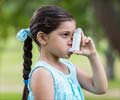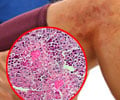A combination of pollutant exposure and cockroach exposure results in increasing the chances of asthma. Pregnant mothers should take better care.

Devid Peden, director of the Center for Environmental Medicine, Asthma, and Lung Biology at UNC School of Medicine, said that in contrast to cats and dust mites, cockroach allergies result in serious repercussions and emergency trips to hospital. However cockroaches are only a part of the story. A recent research published in the Journal of Allergy and Clinical Immunology revealed that ‘exposure to a certain type of air pollutant found in diesel exhaust and other combustion-related byproducts can increase the likelihood of developing a cockroach allergy’.
The scientists studied polycyclic aromatic hydrocarbons, a class of combustion byproducts which is released by the engines of trucks and buses.
Perzanowski, the paper's lead author mentioned, "Asthma research has been going on for a long time, and we haven't found a smoking gun for why asthma has increased."
He added, "This isn't a smoking gun. What it suggests is that this is a complicated story."
The research also showed exposure during the pregnant state can affect the immune system of the child. This exposure puts the child at the threat of being affected by cockroach allergy and consequently asthma.
The duct samples were collected from the kitchens and beds of these women during the third trimester of pregnancy and when their kids were 1, 3 and 5 years of age.
The air was also tested for the presence of polycyclic aromatic hydrocarbons.
‘Scientists collected dust from the beds and kitchens of these women during their third trimester of pregnancy and again when the children were 1, 3 and 5 years old. All dust samples were tested for the cockroach allergens.
Researchers also sampled the air for the presence of polycyclic aromatic hydrocarbons and took blood tests to check for the GSTM1 gene mutation and allergies.’
The researchers observed that ‘80 percent tested positive for high levels of the cockroach allergen. By age 7, 82 children, or 31 percent tested, had the cockroach allergy.’
The scientist discovered that high level of cockroach allergen were responsible for allergy in kids of those mothers who were exposed to combustion byproducts during pregnancy and this risk was more pronounced in those with genetic mutation.
Peden , a member of the research team said, “Studies have shown that diesel exhaust, a source of PAH, shifts the immune response so that you're more highly allergic.”
He further said, ‘The GSTM gene mutation, known as GSTM1, plays a role in the body's ability to detoxify these pollutants. And it's an extremely common mutation -- as many as 40 percent of people have it.’
Peden stated, "GSTM1 is found across genders and ethnicities. The race risk is the human race. It's a pretty huge polymorphism that results in a pretty big chunk of the population."
According to Perzanowski, "Being allergic to cockroaches is one of the number-one risk factors for asthma, and it's important to know what leads to the allergy. Exposure is happening really early in life. So intervention would have to happen really early in life."
The protection steps involve pest management, getting rid of food leftovers, restricting exposure to combustion byproducts and sealing holes in walls to prevent cockroaches cannot escape.
The significance of this research paper is that it highlights an important fact that no single factor is responsible for the occurrence of asthma. There is a multitude or mix of risk factors that are accountable for increasing the chances of asthmatic attack.
According to Peden a combination of pollutant exposure and cockroach exposure can result in increasing the chances of allergic asthma.
Source-Medindia















